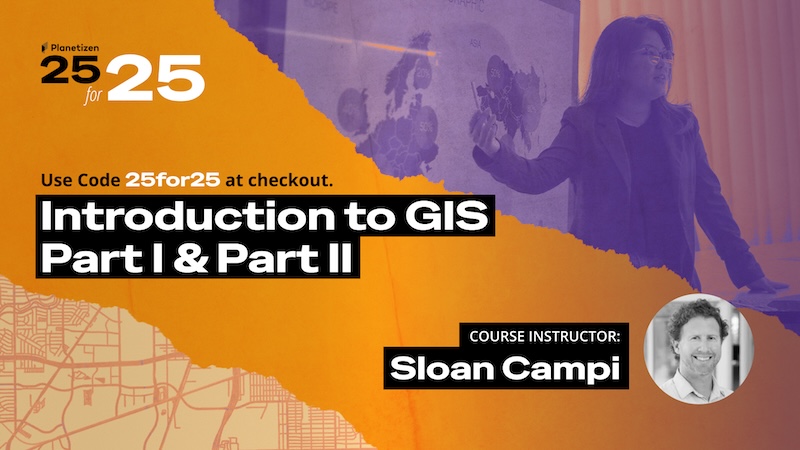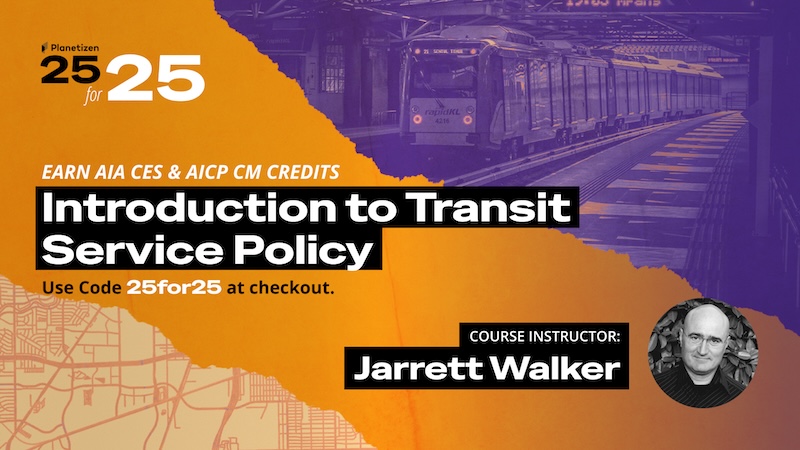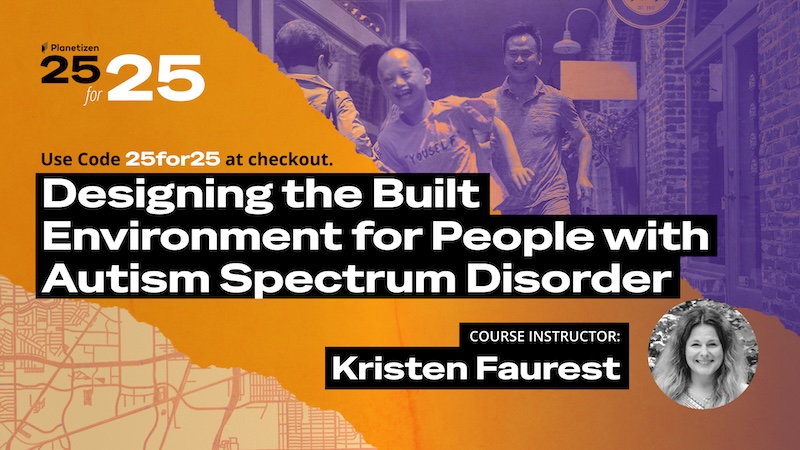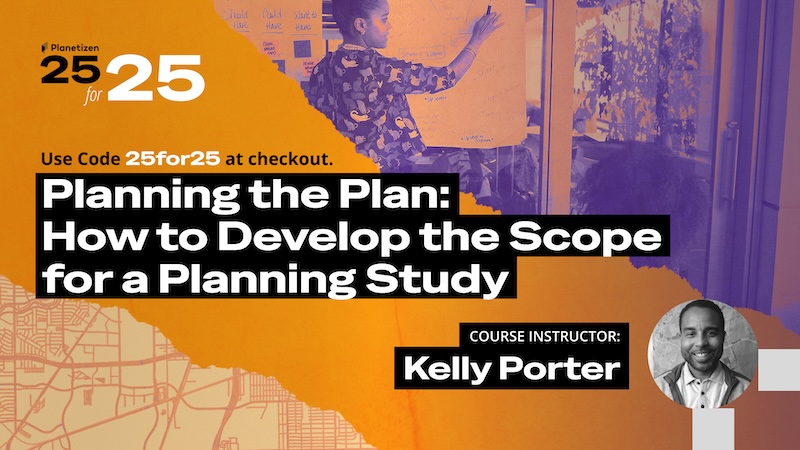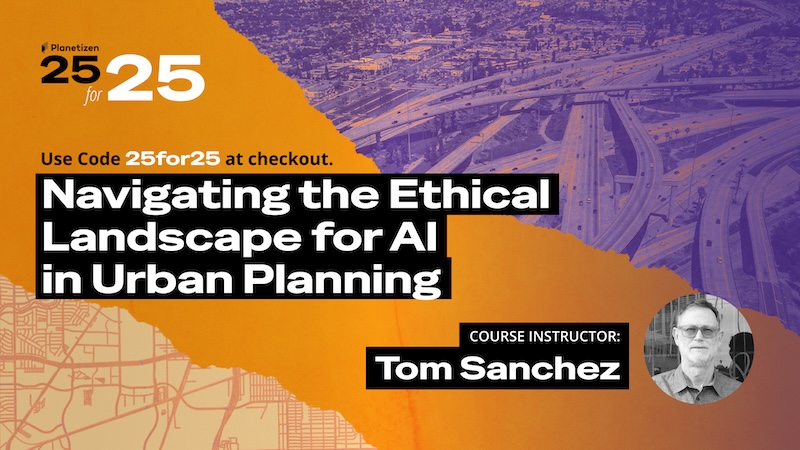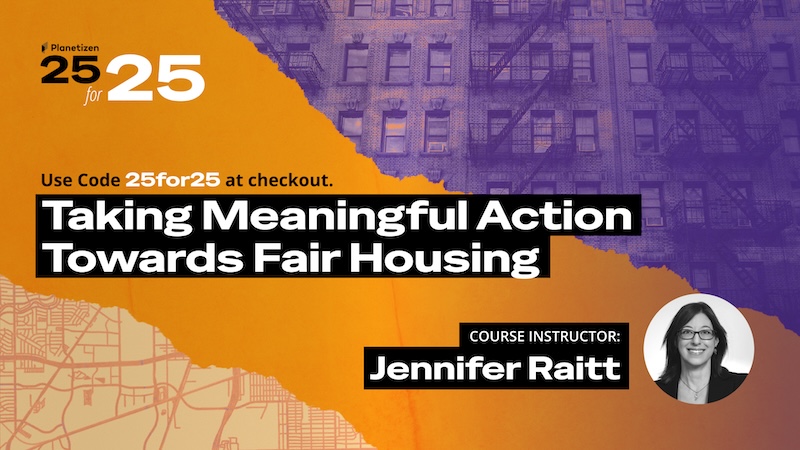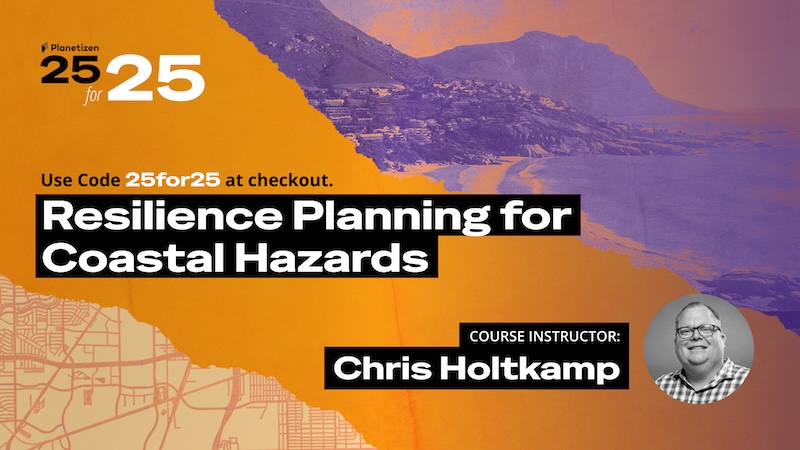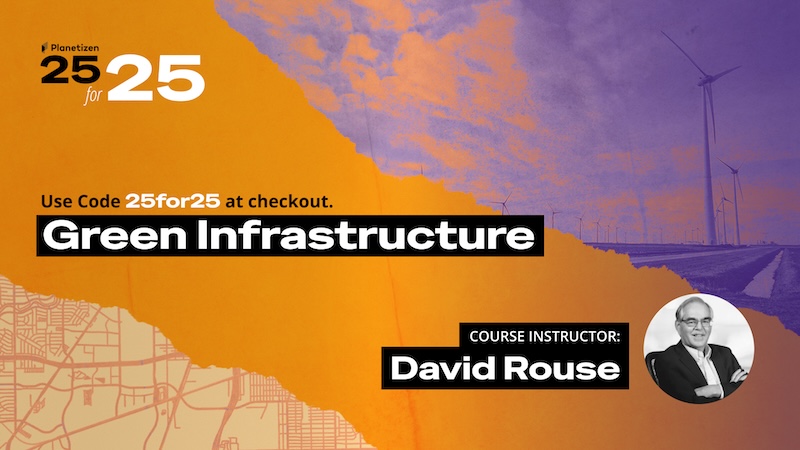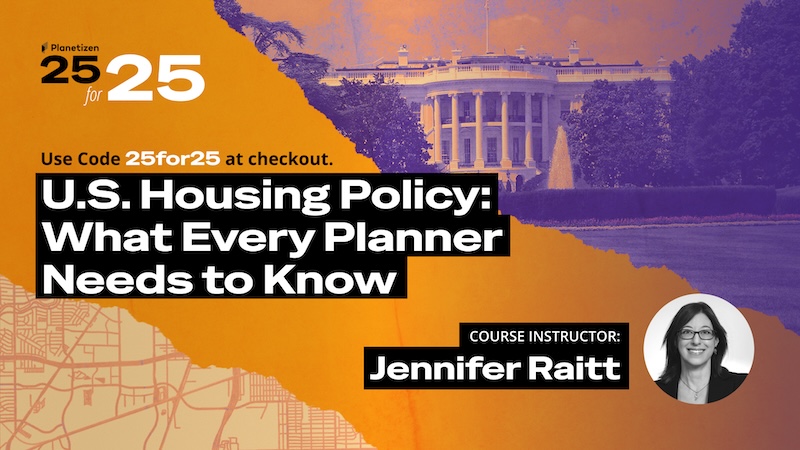As the planning industry continues to evolve, Planetizen remains committed to helping planners through those changes.

Co-founded in 2000 by Chris Steins and Abhijeet Chavan, Planetizen has grown into a resource hub for planning professionals and students. What started as a website for following planning news in Los Angeles has now evolved into a trusted digital media publication and professional development platform – providing planners the skills and insights needed at any stage of their career. This year, the platform reached a major milestone — 25 years in planning.
In 2006, the team launched Planetizen Courses to give planning professionals a place to earn continuing education credits and develop new skills while strengthening existing ones. With a robust library of over 350 courses, Planetizen’s mission has remained the same – to keep the planning community trained and informed to meet the ongoing challenges and demands of the industry.
To celebrate Planetizen’s 25-year milestone, explore ten of the most popular courses ranging in topics such as GIS, housing, transit, AI, resilience planning, and more. View our entire course library here.
*Note: The following courses are ranked in no particular order.
Introduction to GIS Part 1 and Part 2 (Earn AICP CM credit)
Instructor: Sloan Campi
Course Details: “This course serves as the initial step into the world of Geographic Information Systems (GIS) and ArcGIS Pro. It will introduce you to the fundamental concepts of GIS and provide an overview of ArcGIS Pro, a powerful GIS software tool. You'll learn how to navigate the ArcGIS Pro interface, understand the basics of map projections, and grasp essential map design principles.”
Introduction to Transit Service Policy (Earn AIA CES and AICP CM credits)
Instructor: Jarrett Walker
Course Details: “This course explores the geometric facts underlying how transit networks work and how these networks interact with the built environment to create ridership potential. This discussion includes a review of key principles and examples from various recent network designs. We review the multiple and competing goals for transit, and what difficult tradeoffs still need to be made in making transit policy. We will also explore the relatively new concept of access to opportunity as a possibly unifying measure of a transit network’s success.”
Designing the Built Environment for People With Autism Spectrum Disorder
Instructor: Kristen Faurest
Course Details: “In this course we will discuss what autism spectrum disorder is, the many different types that have been identified, how neurodivergent people experience the built environment differently, and the challenges that it presents. We'll explore several case studies of designed spaces meant to answer the needs of people, including children, living with autism, and explain in detail the reasons for the design decisions behind them. Topics will include gardens, signage and fonts, streets, color schemes, playgrounds, public buildings, and other spaces.” (Earn AIA CES and AICP CM credits)
Planning the Plan: How to Develop the Scope for a Planning Study
Instructor: Kelly Porter
Course Details: “It’s important for planners to not only be visionaries, facilitators, and ideators; we must also know the steps and processes to get things done for tangible results. This course will provide students with the basic steps to develop general planning processes, scope structure, and implementable outcomes. The course will provide insight into how to structure a planning process and provide key skills for creating successful procurement documents and contract scoping.” (Earn AIA CES and AICP CM credits)
Navigating the Ethical Landscape for AI in Urban Planning
Instructor: Tom Sanchez
Course Details: “Concerns about recent developments in AI have prompted some serious conversations at the highest levels of government [...] To mitigate these concerns, it's crucial to adopt a responsible and proactive approach toward AI use in urban planning that ensures transparency, privacy, fairness, and accountability and involves diverse stakeholders in the decision-making process — much like we already strive to do in the planning profession. The objective is to find tools that will improve our abilities to observe, analyze, and make plans that lead to improved quality of life.” (Earn AIA CES and AICP CM credits)
Design for Peace and Democracy
Instructor: Kristen Faurest
Course Details: “In this course, we will explore how our designed environments can promote and support both peace and democracy. We will see examples of how design of the built environment can be an instrument of oppression, examining historic examples of large scale public space – including parks, squares and streets – as forums for both tyranny and uprising. We’ll come back to the U.S. for some stories closer to home, and, finally, frame the future in hope and optimism.” (Earn AICP CM credit)
Taking Meaningful Action Towards Fair Housing
Instructor: Jennifer Raitt
Course Details: “This course will provide introductory information about fair housing including: the need for fair housing laws; what it means to affirmatively further fair housing and its limitations; land use policy and zoning; development and plan review; zoning maps; planning processes and fairness; an overview of fair housing assessments and action plans; strategies to affirmatively further fair housing for planners.” (Earn AICP CM credit)
Resilience Planning for Coastal Hazards
Instructor: Chris Holtkamp
Course Details: “The course will begin with an overview of different types of flooding and a discussion of the impacts flooding can have on communities. Common types of flooding include coastal (tidal and storm related), seasonal, flash, and drainage related. Each type of flood can have different causes, impacts, and can require different mitigation strategies. This course builds on the previous "Introduction to Resilience Planning" course and uses the approach presented there as a framework for addressing flood threats in communities. The course will also discuss conventional responses to flooding and the limitations of those approaches.” (Earn AIA CES, AICP CM and SACPLAN CPD credits)
Green Infrastructure
Instructor: David Rouse
Course Details: “This course begins by defining green infrastructure, providing examples of different types of green infrastructure at different scales of concern, and identifying co-benefits provided. Philadelphia’s green infrastructure program is presented as a case study that integrates a citywide green infrastructure network with green stormwater infrastructure to address CSO impacts. The course then addresses the monetary valuation of co-benefits and financing mechanisms to leverage the value provided, and concludes by exploring the role green infrastructure can play in addressing climate change, equity, and technological change.” (Earn AIA CES and AICP CM credits)
U.S. Housing Policy: What Every Planner Needs to Know
Instructor: Jennifer Raitt
Course Details: “This course will provide introductory information about U.S. housing policy covering the following content: highlights from a century of U.S. housing policy (land use and residential politics) between 1860 and the 1950s; social movements and the evolution of inclusive housing policy in the 1960s through the 1980s; the 10 reasons why housing is unaffordable (covering the 1990s through today); how communities plan for housing and policies that affect housing planning; an introduction to affordable housing and who is affected by housing affordability challenges; and a spotlight on key housing policies used to address housing affordability and availability.” (Earn AIA CES and AICP CM credits)
Interested in getting ahead and upskilling this year? Or do you have goals of getting AICP certified? Save big on courses and training by taking advantage of Planetizen’s special 25% discount off on annual subscriptions.
Are you part of a planning team and interested in group training options? Ask about our special group discounts today to make budgeting for team training simple! Click here to learn more.

Planetizen Federal Action Tracker
A weekly monitor of how Trump’s orders and actions are impacting planners and planning in America.

Chicago’s Ghost Rails
Just beneath the surface of the modern city lie the remnants of its expansive early 20th-century streetcar system.

Amtrak Cutting Jobs, Funding to High-Speed Rail
The agency plans to cut 10 percent of its workforce and has confirmed it will not fund new high-speed rail projects.

Ohio Forces Data Centers to Prepay for Power
Utilities are calling on states to hold data center operators responsible for new energy demands to prevent leaving consumers on the hook for their bills.

MARTA CEO Steps Down Amid Citizenship Concerns
MARTA’s board announced Thursday that its chief, who is from Canada, is resigning due to questions about his immigration status.

Silicon Valley ‘Bike Superhighway’ Awarded $14M State Grant
A Caltrans grant brings the 10-mile Central Bikeway project connecting Santa Clara and East San Jose closer to fruition.
Urban Design for Planners 1: Software Tools
This six-course series explores essential urban design concepts using open source software and equips planners with the tools they need to participate fully in the urban design process.
Planning for Universal Design
Learn the tools for implementing Universal Design in planning regulations.
Caltrans
City of Fort Worth
Mpact (founded as Rail~Volution)
City of Camden Redevelopment Agency
City of Astoria
City of Portland
City of Laramie

























